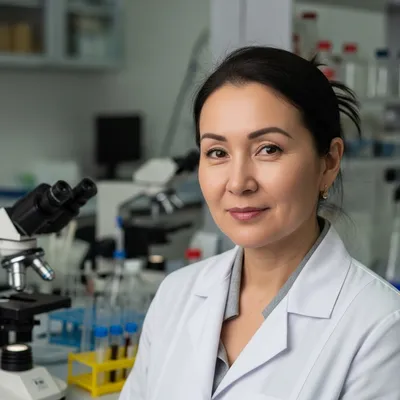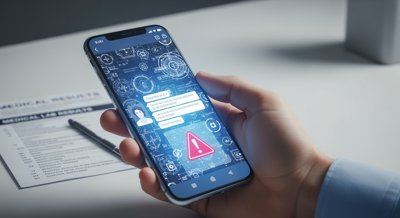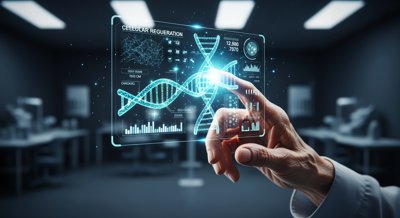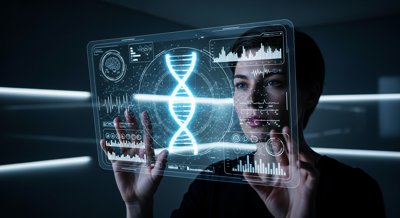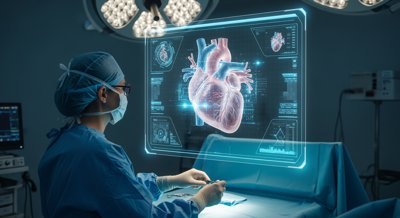🔎 The Fatigue Detective: A Real Story of How AI Uncovered a Hidden Vitamin D Deficiency

Medical Disclaimer: This story is a real-life example but does not constitute medical advice. Symptoms like fatigue can have many causes. Always consult a healthcare professional for diagnosis and treatment. Do not self-prescribe high doses of Vitamin D.
This is a story for the perpetually tired, the frequently sick, and anyone who has ever looked at a “normal” lab report and thought, “Then why do I feel so unwell?” It’s a modern medical detective story where the clues were scattered, the culprit was a silent epidemic, and the investigator that cracked the case was artificial intelligence.
Part 1: The Case of the Drained Executive
Meet Sarah, a 34-year-old marketing executive living in a bustling northern city. On paper, she was the picture of health. In reality, she felt like a shadow of her former self. Her life was defined by a collection of vague but persistent complaints:
- Profound Fatigue: Not just end-of-day tiredness, but a bone-deep weariness that settled in by noon. Her productivity plummeted, and her passion for her work fizzled out.
- A Revolving Door of Illness: It seemed she caught every cold that went through the office, each one lingering for weeks. Her immune system, once robust, felt like it had surrendered.
- Mysterious Aches and Pains: A dull ache in her lower back, sore muscles after minimal exertion. She chalked it up to stress and getting older.
- A Persistent Low Mood: The joy seemed to have drained from her life, replaced by a constant, low-grade irritability and a feeling of being perpetually overwhelmed.
Sarah did what many of us do: she blamed her lifestyle. Stress, not enough sleep, too much screen time. She powered through with caffeine and the promise of the weekend, but the feeling of being “unwell” never truly lifted.
Part 2: The Puzzle of the “Normal” Lab Report
Finally, Sarah sought answers in a comprehensive blood test. The results came back, a long list of numbers and acronyms. She scanned the page, and everything seemed to be within the reference range. Hemoglobin, white blood cells, thyroid function—all normal.
But there was one line that caught her eye: 25-OH Vitamin D. Her result was 18 ng/mL. The lab’s reference range started at 20 ng/mL, so it was flagged as slightly low, but not dramatically so. The internet was a confusing mess of conflicting information. Was this the cause of her profound fatigue, or just an insignificant finding?
This is a classic diagnostic challenge. The symptoms are non-specific, and the lab result is borderline. It’s a puzzle with missing pieces.
Part 3: The AI Analyst Connects the Dots
Frustrated, Sarah turned to an AI-powered health platform. She uploaded her lab results and detailed her symptoms. This is where the story shifts. An AI doesn’t just see a single number; it sees a network of connections, a pattern woven from a vast dataset of clinical knowledge.
The AI began to connect the dots in a way a cursory glance might miss:
- Fatigue & Muscle Aches: The AI cross-referenced her low Vitamin D with her physical symptoms. It noted that Vitamin D receptors are present in muscle tissue and are crucial for mitochondrial function—the tiny power plants within our cells. A deficiency can lead to impaired energy production, manifesting as fatigue and muscle weakness.
- Frequent Colds & Immunity: The AI connected her history of recurrent infections to the critical role Vitamin D plays as a modulator of the immune system. It explained that the vitamin is essential for activating T-cells, the “special forces” that identify and destroy pathogens. Without sufficient Vitamin D, the immune response is sluggish and ineffective.
- Low Mood & Brain Function: The AI identified the link between her mood disturbances and the presence of Vitamin D receptors in areas of the brain that regulate mood and behavior. It highlighted research suggesting a strong correlation between low Vitamin D levels and symptoms of depression.
The AI didn’t offer a diagnosis. It presented a clear, evidence-based hypothesis: “There is a high probability that your constellation of symptoms—fatigue, recurrent infections, muscle pain, and low mood—is linked to your suboptimal Vitamin D status. A discussion with a healthcare provider to confirm this and establish a treatment plan is recommended.”
Part 4: The Resolution and the Revelation
Armed with this clear, structured insight, Sarah’s conversation with her doctor was transformed. She wasn’t just a patient with “vague complaints”; she was an informed participant with a specific, data-driven question.
The doctor agreed with the AI’s analysis. Sarah was diagnosed with a clinical Vitamin D deficiency and prescribed a therapeutic supplementation plan. The change was not immediate, but over the next two months, it was profound. The fog of fatigue lifted, her mood stabilized, and she made it through the entire winter without a single significant illness.
What This Story Teaches Us:
- “Normal” Isn’t Always Optimal: Many common symptoms can be caused by a deficiency that falls just below or at the low end of a standard reference range.
- Symptoms are a Network, Not a List: Seemingly unrelated complaints can be interconnected. The power of AI in medicine lies in its ability to see these complex patterns.
- Vitamin D is a Prohormone, Not Just a Vitamin: It plays a powerful role in hundreds of bodily processes. A deficiency is a serious medical issue with far-reaching consequences.
- Technology as an Empowerment Tool: AI is not a replacement for a doctor, but a powerful tool that can help you understand your lab results and have more productive conversations with your healthcare provider.
Sarah’s story is incredibly common. It’s estimated that up to 1 in 4 adults have insufficient Vitamin D levels. Her journey from chronic fatigue to renewed vitality began with connecting the dots—a task where the tireless, data-driven mind of an AI proved to be the perfect detective.
